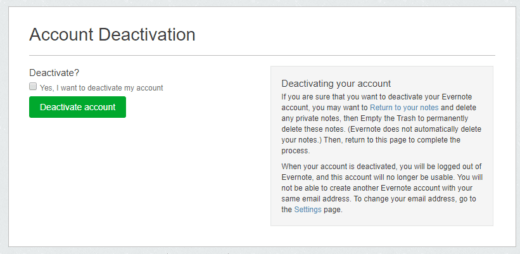
 Our first tests work independently from any plumbing operation with the other connectors. We’re happy with the API operations available (otherwise there’s no point going further). Next up, we should get the following message (the tiny green sentence top of the screen):īefore going further, it’s time to test the connector instance to make sure that: Once we click on “create instance” in AMPLIFY, this should trigger the OAuth flow and create a redirect to Evernote. Time to give our instance a name and reuse our Evernote API Key & Secret. We hover over the connector and authenticate: It’s like your door is not a real door before putting a specific lock in it. To create those, we need to authenticate (maybe you’re confused so was I the first time… having an obvious button like “create instance” would have made things easier). If you want to better understand this screen and what’s a connector, this documentation page is very clear and useful: Introduction to Connectors.Īt this stage, we found the right connectors… yet, we did not create any instance of those connectors.
Our first tests work independently from any plumbing operation with the other connectors. We’re happy with the API operations available (otherwise there’s no point going further). Next up, we should get the following message (the tiny green sentence top of the screen):īefore going further, it’s time to test the connector instance to make sure that: Once we click on “create instance” in AMPLIFY, this should trigger the OAuth flow and create a redirect to Evernote. Time to give our instance a name and reuse our Evernote API Key & Secret. We hover over the connector and authenticate: It’s like your door is not a real door before putting a specific lock in it. To create those, we need to authenticate (maybe you’re confused so was I the first time… having an obvious button like “create instance” would have made things easier). If you want to better understand this screen and what’s a connector, this documentation page is very clear and useful: Introduction to Connectors.Īt this stage, we found the right connectors… yet, we did not create any instance of those connectors. 
We can use the search bar to find both connectors. Can’t find the one you want? No problem, as long as the product has an API, you can build your connector quite easily. Luckily, AMPLIFY™ Application Integration has more than +200 pre-built integrations, including Evernote and Syncplicity. The first step will be to find the right connectors to perform our integration. When clicking on the Request Key, you should get both the key and the secret (called consumer key and consumer secret). To get them, simply go to the Evernote Developers page and click on the top right green button “Get an API Key.” First, on Evernote, you’d need an API Key and secret. Since we’re going to build programmatic “plumbing” securely, we need the right authentications on both products. In your Evernote sandbox, create and name a new notebook, add some text and a file to it for example.
An Evernote sandbox account (see here Testing in the Sandbox – Evernote Developers this will avoid messing up with a real Evernote account.). A Syncplicity account (your demo account or a trial account will do). To perform the steps, we need access to the following: 
More specifically, integrating X with Z-in this case, X being Evernote and Z being Syncplicity. I am still in the learning process of this tool, but it works and can serve as a basis for future enhancement.Īs Customer Service Managers (CSMs), we come across many questions around Integration. This article demonstrates what I learned while rapidly creating a proof of concept to publish and connect Evernote to Syncplicity via AMPLIFY Application Integration.







 0 kommentar(er)
0 kommentar(er)
